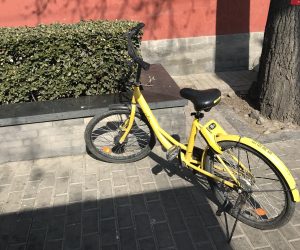I posted here not long ago about my efforts to learn Mandarin. It’s tough, but for me, it’s not just about the personal challenge of learning a new language – it’s also about trying to get under the skin of a different culture. This is particularly important for me because I think that learning a language is also a great way to gain an insight into the way that people think and talk about business. So, I was really pleased to be able to head to Beijing recently for a few weeks to try and give my Mandarin a boost – and I have to say it was a very productive and interesting visit.
A tech revolution
There are many fascinating cultural differences that strike you when you visit Beijing – but I was struck on this particular visit by one overriding phenomenon – the extent to which the Chinese have embraced the QR code. While you do often see QR codes being used in all sorts of settings in the rest of the world, I was struck by just how ubiquitous the technology has become in China. In Beijing, I saw it being used for everything from renting bicycles on the street to ordering your food in restaurants – with most people using WeChat to scan the code for information.
WeChat now has around a billion users and could be described as the WhatsApp of China – and it allows not just QR code scanning but also payment using your phone and a linked bank account. Again, along with the QR code it was a piece of tech I’d heard of – but had no idea of the extent to which it is now being used in China.
Multiple uses
Here’s a quick example – my wife, her parents and I went to a restaurant that had no menus and only one waiter for more than ten tables. This unusual set up worked like a dream however – because diners simply needed to scan the QR code on the table to access the menu, place the order and then pay the bill. It’s a nice example of just how far the QR code has permeated almost every aspect of consumer life in Beijing – but it’s far from the only one.
On the same trip, the first thing my father-in-law did was hand to me a mobile phone that had multiple apps loaded onto it that allowed for payment by QR code. After leaving the restaurant that evening, we stepped outside, found a yellow ofo bicycle, scanned the QR code, unlocked the bike and pedalled off. We then went to the San Yuan Li Market ( 三源里菜市场) to buy some fruit and veg, and used another app to scan a QR code which was taped onto a pole next to the fruit lady’s stand – once again, payment was immediate and hassle-free.
Simple tech, but with many applications
I could go on: everywhere, right across the city, in everything from tea shops to the local craft brewery, we were able to use QR codes to pay quickly and easily. Of course, you need to be settled in China to use them, as without a local credit card or bank account to top-up the payment the apps are useless – but the principle still stands that China has embraced this technology in multiple ways and has made it straightforward and simple to use.
So, what did I learn from the experience of using QR codes in so many different ways in Beijing? Well, firstly that often the simplest solutions are often the best – the technology behind QR codes is not new, nor is it particularly complex. The impact, for me at least, was being in Beijing and seeing the extent to which it has been implemented across almost every type of transaction you can think of.
And I think that, in many ways, that is the key to the success of any piece of technology: it has to be simple enough for people to be able to make it their own, to take it and shape it so that it works for them, whenever and wherever they need it. Because of the flexibility and adaptability of this simple technology to so many different environments – from lampposts to bikes to restaurant tables – China truly has become the land of the QR Code.

